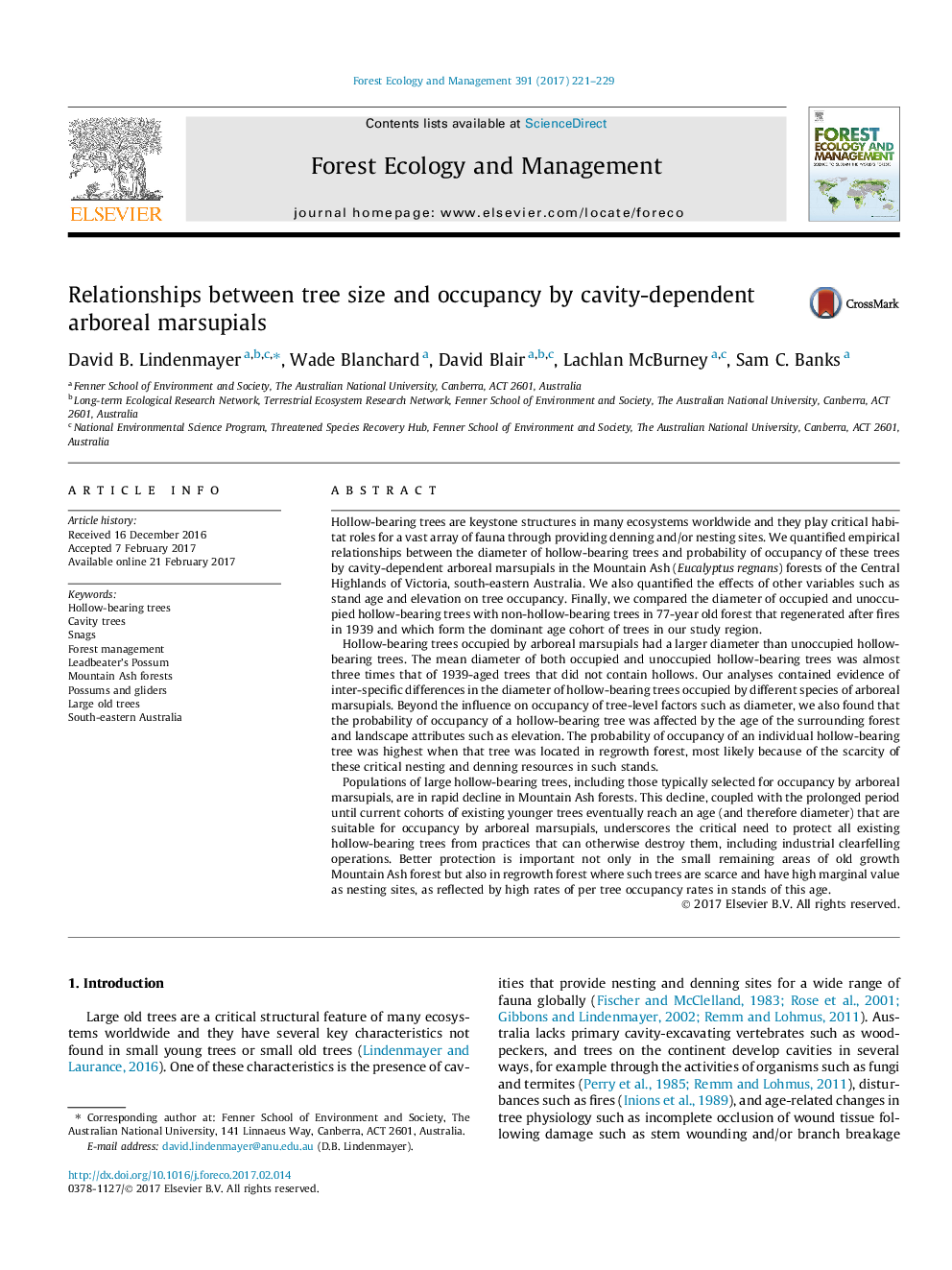| کد مقاله | کد نشریه | سال انتشار | مقاله انگلیسی | نسخه تمام متن |
|---|---|---|---|---|
| 6459429 | 1421367 | 2017 | 9 صفحه PDF | دانلود رایگان |
- Hollow-bearing trees are keystone structures in Australian Mountain Ash forest.
- We quantified relationships between tree diameter and hollow tree use by marsupials.
- Trees used by arboreal marsupials had a larger diameter than unoccupied trees.
- The diameter of hollow-bearing trees was three times that of trees lacking hollows.
- Better protection and recruitment of hollow trees is critical in production forest.
Hollow-bearing trees are keystone structures in many ecosystems worldwide and they play critical habitat roles for a vast array of fauna through providing denning and/or nesting sites. We quantified empirical relationships between the diameter of hollow-bearing trees and probability of occupancy of these trees by cavity-dependent arboreal marsupials in the Mountain Ash (Eucalyptus regnans) forests of the Central Highlands of Victoria, south-eastern Australia. We also quantified the effects of other variables such as stand age and elevation on tree occupancy. Finally, we compared the diameter of occupied and unoccupied hollow-bearing trees with non-hollow-bearing trees in 77-year old forest that regenerated after fires in 1939 and which form the dominant age cohort of trees in our study region.Hollow-bearing trees occupied by arboreal marsupials had a larger diameter than unoccupied hollow-bearing trees. The mean diameter of both occupied and unoccupied hollow-bearing trees was almost three times that of 1939-aged trees that did not contain hollows. Our analyses contained evidence of inter-specific differences in the diameter of hollow-bearing trees occupied by different species of arboreal marsupials. Beyond the influence on occupancy of tree-level factors such as diameter, we also found that the probability of occupancy of a hollow-bearing tree was affected by the age of the surrounding forest and landscape attributes such as elevation. The probability of occupancy of an individual hollow-bearing tree was highest when that tree was located in regrowth forest, most likely because of the scarcity of these critical nesting and denning resources in such stands.Populations of large hollow-bearing trees, including those typically selected for occupancy by arboreal marsupials, are in rapid decline in Mountain Ash forests. This decline, coupled with the prolonged period until current cohorts of existing younger trees eventually reach an age (and therefore diameter) that are suitable for occupancy by arboreal marsupials, underscores the critical need to protect all existing hollow-bearing trees from practices that can otherwise destroy them, including industrial clearfelling operations. Better protection is important not only in the small remaining areas of old growth Mountain Ash forest but also in regrowth forest where such trees are scarce and have high marginal value as nesting sites, as reflected by high rates of per tree occupancy rates in stands of this age.
Journal: Forest Ecology and Management - Volume 391, 1 May 2017, Pages 221-229
